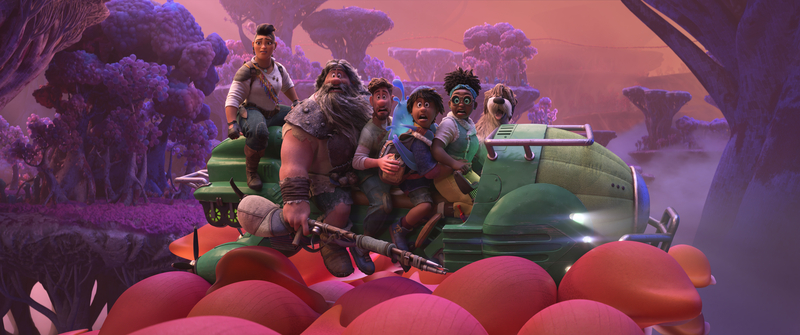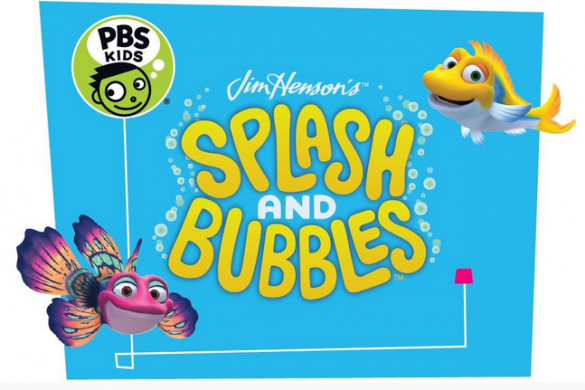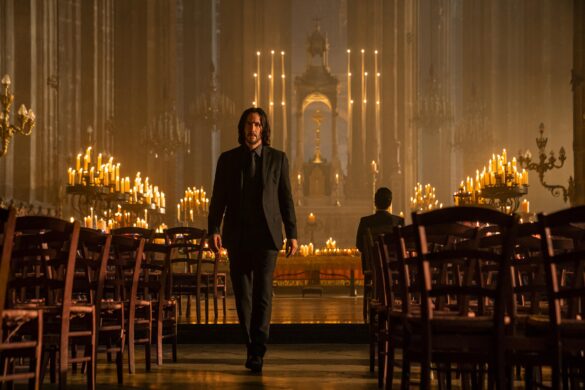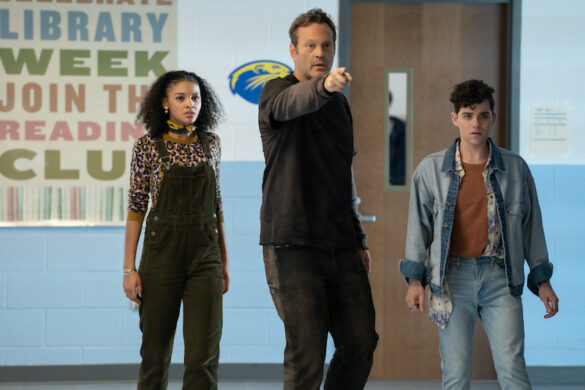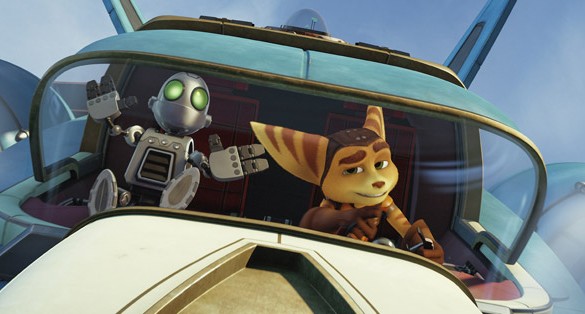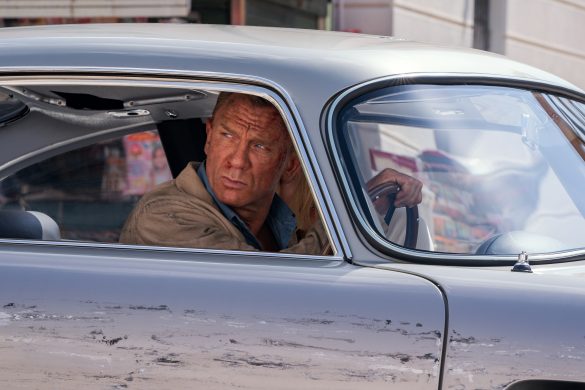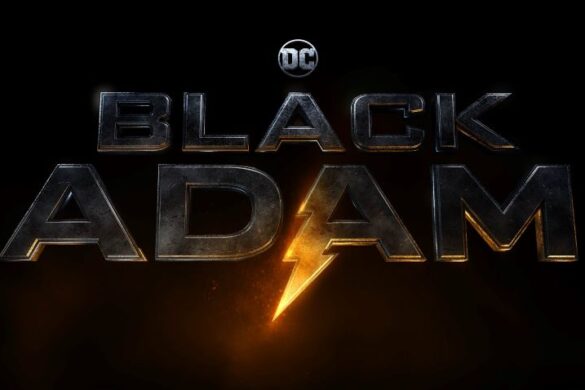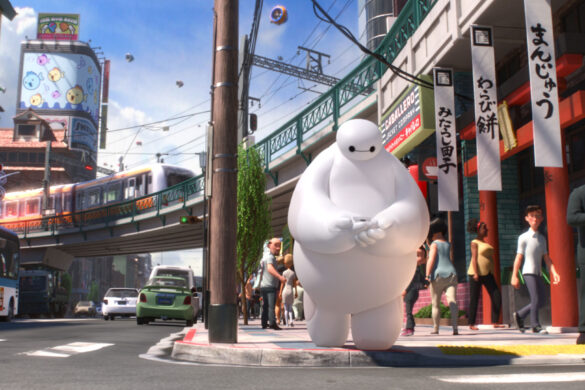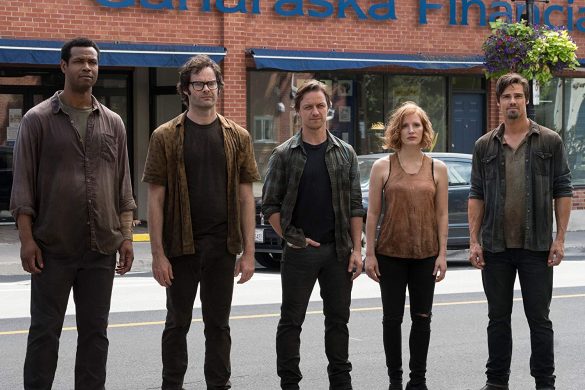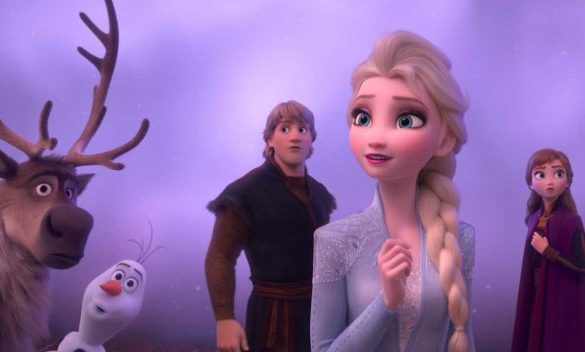“Strange World” had all the essential elements that make an outstanding Walt Disney Animation Studios feature. It had a bold story, great characters, and fantastic visuals. But the fantasy adventure epic didn’t quite live up to the audience’s expectations because it relied too much on familiar structures. That being said, its story about fathers and sons and the legacy they want to leave behind resonates with those who share similar experiences and understand the complexities of family dynamics.
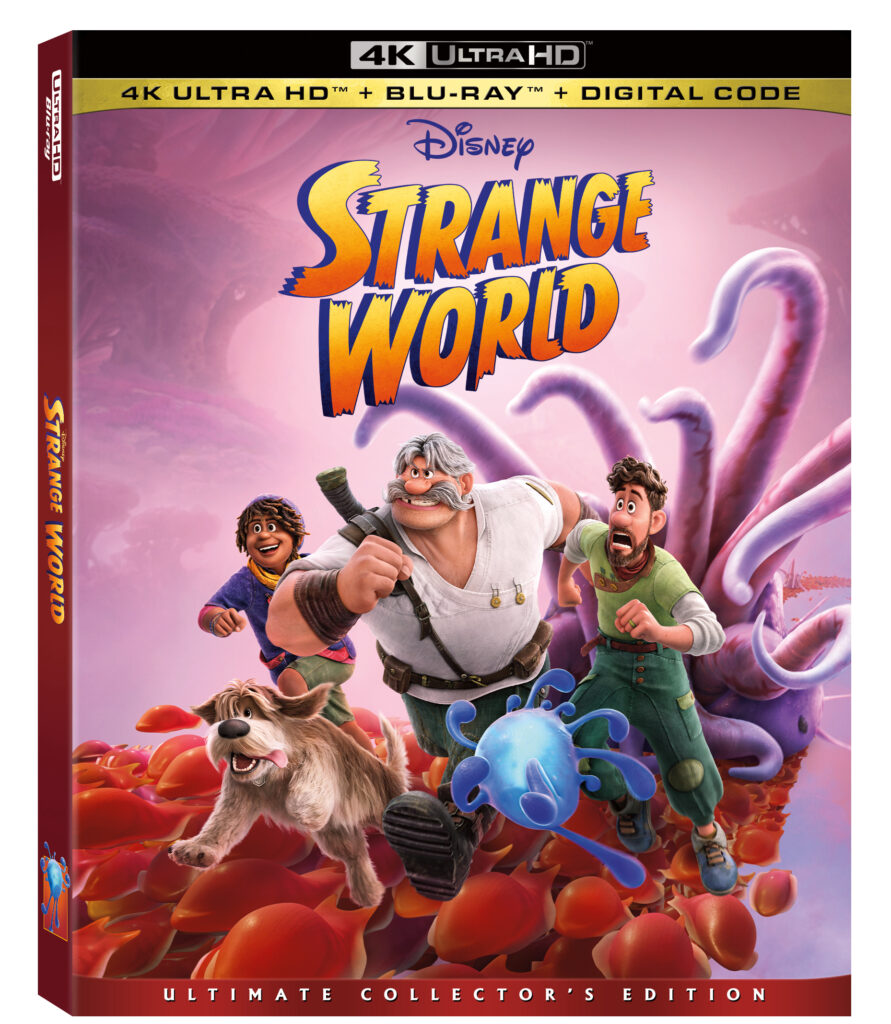
There will be some slight spoilers ahead as the featurettes mentioned talk about some of the film’s biggest twists and surprises. So if you want to go into the film with fresh eyes, then this is your chance to back out and watch it. Just be sure to come back here after to take a look at our review of the bonus features.
Inspired by the pulp comics and classic rough and gruff action-adventure films of the past, “Strange World” follows the father and son explorers Jaeger Clade (Dennis Quaid) and Searcher (Jake Gyllenhaal). The film’s cold opening newsreel informs audiences of their adventures across the unchartered Avalonia, showing clips of a brave and muscular Jaeger showing no fear. At the same time, a curious and meek Searcher takes a more cautious approach to his exploration.
These expeditions serve a dual purpose as it helps find what lies beyond the treacherous mountains and find something that could help the people of Avalonia prosper. And Searcher believes he found the latter in a plant called Pando. As a result, he believes that their mission should end and that they should return home. However, Jaeger insists on continuing the expedition and leaves his team behind to find out what’s out there.
25 years later, Searcher’s discovery has helped the people of Avalonia thrive. They use it as an energy source for heat, fuel, and power. With the help of his aviator wife Meridan (Gabrielle Union) and their son Ethan (Jaboukie Young-White), they farm Pando. However, when the president of Avalonia, Callisto Mal (Lucy Liu), informs them that Pando is losing its power, the Clades venture into the unknown to find out what’s killing it. On their journey, the family makes new friends, encounters all kinds of danger, and makes a few discoveries along the way.
Though “Strange World” does a fairly impressive job of its world-building, there isn’t nearly enough of a solid story to sustain audiences’ interest in the characters’ journey. There are high stakes, and the surrounding environments are stunning to look at. Still, it’s in direct conflict with the story about the legacy fathers want to leave to their children. Though the lack of cohesion is worrisome, the emotional stakes resonate are there as you want to see a father and son resolve their differences or embrace the idea of a child charting their own path.
The fantastical environments and steampunk aesthetics are grounded by modern-day cultural norms. The film normalizes mixed-race families and, in a studio first, has a bi-racial LGBTQ+ lead character. So it’s great to see how “Strange World” could subvert some of those pulp comic and classic adventure tropes with a modern-day touch. Seeing an openly gay character Ethan be accepted by his family in a film like this is rare to see, but it is also an important mage to display, especially during these times.
Now, the film comes with obligatory bloopers and deleted scenes. None of which really amount to much more than a few quick laughs, a look at the voice recording process, and which scenes didn’t make it into the final cut.
But the real heart of the making of “Strange World” lies within its four featurettes. “Anatomy of a Scene” breaks down one of the more intense scenes in the film, while “Strange Science” explores some real-life grounded science behind one of the film’s biggest twists. The “Creature Feature” is an old-timey newsreel look at some of the creatures that audiences encountered in the movie. And finally, “The Hidden Secrets of ‘Strange World’” uncovers some of the Easter Eggs you may have missed during your first watch of the film.
“Strange World” had all the essential elements that make an outstanding Walt Disney Animation Studios feature. It had a bold story, great characters, and fantastic visuals. But the fantasy adventure epic didn’t quite live up to the audience’s expectations because it relied too much on familiar structures. That being said, its story about fathers and sons and the legacy they want to leave behind resonates with those who share similar experiences and understand the complexities of family dynamics.
Inspired by the pulp comics and classic rough and gruff action-adventure films of the past, “Strange World” follows the father and son explorers Jaeger Clade (Dennis Quaid) and Searcher (Jake Gyllenhaal). The film’s cold opening newsreel informs audiences of their adventures across the unchartered Avalonia, showing clips of a brave and muscular Jaeger showing no fear. At the same time, a curious and meek Searcher takes a more cautious approach to his exploration.
These expeditions serve a dual purpose as it helps find what lies beyond the treacherous mountains and find something that could help the people of Avalonia prosper. And Searcher believes he found the latter in a plant called Pando. As a result, he believes that their mission should end and that they should return home. However, Jaeger insists on continuing the expedition and leaves his team behind to find out what’s out there.
25 years later, Searcher’s discovery has helped the people of Avalonia thrive. They use it as an energy source for heat, fuel, and power. With the help of his aviator wife Meridan (Gabrielle Union) and their son Ethan (Jaboukie Young-White), they farm Pando. However, when the president of Avalonia, Callisto Mal (Lucy Liu), informs them that Pando is losing its power, the Clades venture into the unknown to find out what’s killing it. On their journey, the family makes new friends, encounters all kinds of danger, and makes a few discoveries along the way.
Though “Strange World” does a fairly impressive job of its world-building, there isn’t nearly enough of a solid story to sustain audiences’ interest in the characters’ journey. There are high stakes, and the surrounding environments are stunning to look at. Still, it’s in direct conflict with the story about the legacy fathers want to leave to their children. Though the lack of cohesion is worrisome, the emotional stakes resonate are there as you want to see a father and son resolve their differences or embrace the idea of a child charting their own path.
The fantastical environments and steampunk aesthetics are grounded by modern-day cultural norms. The film normalizes mixed-race families and, in a studio first, has a bi-racial LGBTQ+ lead character. So it’s great to see how “Strange World” could subvert some of those pulp comic and classic adventure tropes with a modern-day touch. Seeing an openly gay character Ethan be accepted by his family in a film like this is rare to see, but it is also an important image to display, especially during these times.
Now, the film comes with obligatory bloopers and deleted scenes. None of which really amount to much more than a few quick laughs, a look at the voice recording process, and which scenes didn’t make it into the final cut.
But the real heart of the making of “Strange World” lies within its four featurettes. First, “Anatomy of a Scene” breaks down one of the more intense scenes in the film, while “Strange Science” explores some real-life grounded science behind one of the film’s biggest twists. Next, the “Creature Feature” is an old-timey newsreel look at some of the creatures that audiences encountered in the movie. And finally, “The Hidden Secrets of ‘Strange World'” uncovers some of the Easter Eggs you may have missed during your first watch of the film.
“Anatomy of a Scene” focuses on one of the film’s most pivotal and visually stunning scenes that showcases what the talented Disney animators could do and more. In it, director Don Hall talks about the daunting task of doing a chase scene on a moving undulating bloodstream. But, for him, it was less about its complex execution and more about the visual epicness. “Don challenged us all in this scene to make something special, something that you’ve never seen in a Disney film,” co-director and writer Qui Nguyen said.
“It’s hugely complex, and it is the biggest sequence in the film. We thought this was a really great way of showing what goes into making these films.” producer Roy Conli said. “We had an amazing team. They really had to work together to create this sequence.”
Artists talk about some of the complexities of animating the film’s most ambitious sequence, comparing the blood cells to a train in the sky while three generations of Clades, a three-legged dog, skiffs, are either running, flying, or trying to escape from certain death. Not to mention that there had to be a narrative piece to tell on cohesion with the action sequence. So it was a lot to ask for.
For those who may have forgotten, the scene “Don’t Fear the Reaper” starts with Searcher and Ethan Clade at the edge of a cliff with a crazy drop. But instead of panicking, the adventurous Jaeger Clade decides to take both off the cliff and onto the bloodstream.
Hall stressed not holding back on making the scene as epic as possible. So starting with visual development, the artists like Mehrdad Isvandi and Larry Wu designed the landscape and trajectory based on the notes and scripts they received from Nguyen. It’s a collaborative process requiring many discussions, storyboarding, and more. And after sifting through different iterations, the team would come to a consensus on how to build the sequence in a way that would be the most effective to tell the story.
For the story department, the scene was also one of the most difficult they had ever done. From a boarding standpoint, it’s challenging to track camera movements, moving characters, moving environments, and make that read into drawings. So boarding artists do a lot of experimentation regarding all of those nuances. They try out multiple ideas, some of which come from the script, while others are improvised.
After that, it moves to editorial, where the post-production team does a rough film cut before they animate it. As such, editors like Sarah K. Reimers must collaborate with directors and story leads. She then pairs the storyboards she is given with the scratch dialogue (a rough version of the script). This is where anyone working in the studio would perform under the mic, and Reimers would cut it to the boards. The idea is to make sure the dialogue sticks to the landing so that when the actors come in, it will even be better than it was when it started.
Reimers compares it to comic books coming to life, essentially saying it’s the bones of the film.
And after a few screenings to better understand what the sequence should look like, the environment team builds the surrounding world. And one of the challenging parts of building such a world is making everything about it living and breathing. Literally, so, to ensure everything runs smoothly for this sequence, the environment needs to be huge. So “Layout” helps with a lot of the camera tracking. As digital cameramen, they take the storyboards and transfer them to animation. Then, starting with the staging and blocking, the team figures out the camera movement. Finally, the “Crowds” department helps populate the film, and not just with humans. And for a sequence that has blood cells swimming in a stream, you’ll need something like crowds to make it look seamless.
The cast recordings portion of this featurette sees the actors talk about their recording processes and how open Hall was to doing something off kilter. And the animation team would need to figure out the right moment in the audio recordings to match what was happening when the characters were running on the bloodstream. With “Technical Animation,” we see how the characters come alive. They have to augment the performance with the cloth and hair they craft. And a lot of the time, they have to do the same kind of running to act as a reference to see how different clothes or hair might react in the same scene they wanted to animate. The main goal is believability.
From there, we learn about lighting, rendering and tactics, sound and score before it all ends up being released to us in theaters. It’s quite a process just for one scene.
“Strange Science” looks at the strange real-life science behind “Strange World.” Jabuokie Young-White talks us through some of the inspirations behind the look and feel of the film. To keep the plot twist from being revealed too early, animators had to alter the look of the world that we saw, from the T-cells to the lungs. “While they made the world their own, the filmmakers stayed true to science and biology,” he said.
Hall’s initial pitch was what if the characters discovered that their world was an actual living thing. And since “Strange World” was set on a living thing, Hall and the Disney animation team needed to learn as much about the body as possible. And at Disney, research is always imperative to tell stories. So “Strange World” was no exception. After reaching out to medical experts, scientists, and biologists, animators would have a rough idea of how to design the characters and landscapes.
The entire featurette is dedicated to relating how animators could translate the cells and organ functions into something that would appear like an unexplored world. For example, trees inhale and exhale are part of the lungs. The surrounding environment is “wet and squishy” because organisms are water-based. And working with electron microscopes, Hall discovered how much cells looked like landscapes or how they could appear terrifying if they were on the same scale as humans. Animators even found ways to tie in natural acidic lakes with how the turtle’s stomach functions.
“Strange Science” is a fun featurette that educates the audience on the anatomy and how Disney animators worked to make that world their own while staying true to the biological sciences.
As for the “Creature Feature” featurette, audiences can expect to see something that would appear on a video screen for a queue to a “Strange World” Disneyland attraction. Though its opening informs the audience that the creatures they are about to see can only be described as “terrifying, creepy crawly, gassy, and cute and squishy.” The reality is that there are many more to the creatures you see than meets the eye. And using science-based facts, these creatures have other purposes than to look visually stunning.
Finally, the “Hidden Secrets of ‘Strange World'” is a fun little Easter Egg hunt for the Disney fan in all of us. The featurette reveals some subtle Disney references and a few Hidden Mickeys. Some of the deep cuts include how Legend got his name, as well as a few other characters that didn’t make the final cut but still got to appear in the film in a blink-and-you-‘ll-miss-it moment. And we learn what Disney character inspired Splat.
The featurette is also a numbers game, which includes how many total shots make up the film. Not only that, but the featurette also reveals the number of different blood cells, t-cells, stem cells, macrophages, and other biological organisms that make it into the film.
For what it’s worth, “Strange World” was this fantastic blend of Disney animation paying homage to the “Indiana Jones” film franchise and “Fantastic Voyage.” It subverted the genre with a few modern-day touches. We saw this action adventure film through the lens of three generations of family. It is also one of the few animated films to feature an interracial family. Not only that, it is amongst the first to have an LGBTQ+ character as the lead. That in itself is a massive milestone for animation. And while it tries to do something new by avoiding a familiar formula that they’ve used, the familial conflict is something we’ve all seen before.
But for those who really want to see how a film of this magnitude is put together, they should watch all four bonus features. They all give us a rare peek into the inner workings of Walt Disney Animation Studios. From seeing multiple teams collaborate to animate one of the film’s most complex scenes to researching with real-life scientists to make the film grounded in reality, it’s really a fun way to learn about how the cast and crew made “Strange World” live up to its title.
Here’s a full list of bonus features and deleted scenes that are available on “Strange World,” which is available now on digital, and will hit store shelves on 4K Ultra HD, Blu-ray and DVD on Febtruary 14, 2022.
Bonus Features*
- Anatomy of a Scene: Creating A Strange World – Learn about Walt Disney Animation Studios’ creative process through a single, visually stunning scene as the filmmaking team puts all of their imagination – and more – on the screen.
- Strange Science – Jaboukie Young-White (voice of Ethan Clade) hosts an exploration of how Walt Disney Animation Studios artists were inspired by real science to create Strange World.
- Creature Feature – Journey into the world beneath Avalonia and meet some of the terrifying, slimy, gassy – and sometimes cute – creatures that inhabit this Strange World.
- The Hidden Secrets of Strange World – Uncover the references and characters from some of your favorite Walt Disney Animation Studios films hidden throughout the film, along with some fun facts and behind–the–scenes stories of how Strange World was made.
- Outtakes – Go behind the glass as we join the cast of Strange World inside the recording booth for some fun, flubs and outtakes.
Deleted Scenes
- The Ballad of Jaeger Clade
- Lightning Lynx
- Funerals and Promises
- Ethan and Searcher
*Bonus features vary by product and retailer
8/10

